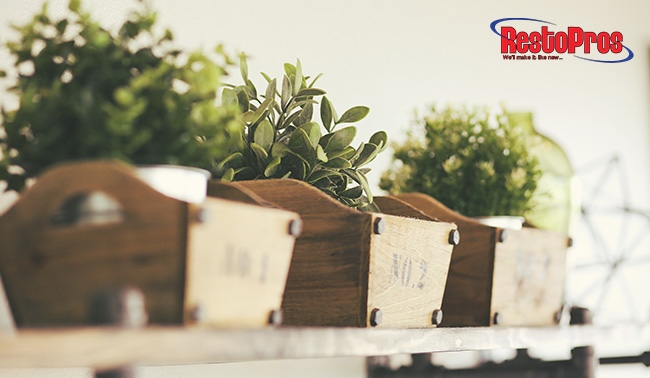Not all outbreaks of mold inside your house are inadvertent. Some are brought into the house, taken care of, and watered – flourishing directly in front of you. This can often happen to houseplants as well as the fertilized soil where they develop. Mold thrives anywhere there is food and dampness in addition to a warm temperature. The soil inside a pot regularly attracts mold encouraged by the rotting leaves and other dead organic matter that falls into the dirt. Thus, the customary watering given by homeowners can sometimes make the plant an ideal place for mold growth.
Wipe the mold off of your plants
Take a soggy paper towel and, while supporting the stems with your fingers so you don’t break them, delicately wipe down the plant leaves to eliminate any surface mold. Additionally, wipe the tail of the plant. Pluck contaminated plant materials and leaves around plants and arrange in the trash to abstain from spreading sickness. When using tools to cut infected wood, make sure that you use tea tree oil to sanitize them after use. Get weeds far from plants, as they can hold creepy crawlies and microbes. Water plants routinely yet abstain from overwatering, which can contribute to mold growth. Utilize an assortment of plants since organisms will in general be plant-explicit, and buy ensured illness-free seeds and cuttings whenever the situation allows.
Take the plant outside
Take it outside and splash it with an EPA-registered fungicide that will stop mold growth. You can get guidance from a local nursery about the ideal fungicide for your specific plants. Compound fungicides can be hurtful to different plants, kids, pets and nature. Tea tree oil is a characteristic item that has been utilized for quite a long time as an antimicrobial for a wide assortment of conditions. When used appropriately, tea tree oil can help control contagious sicknesses on plants without a large number of the hazardous symptoms of compound fungicides.
Before bringing the plant again into the house, scoop out the top layer of gardening soil in the pot, diving as deep as conceivable without harming roots. Supplant this dirt with crisp gardening soil that is marked as “disinfected” to stop mold during creation.
Don’t over-water houseplants
Don’t water your plants too often as overabundant dampness can trigger mold growth. Talk to your local nursery professional about the right amount of water for your plants. Also take into account the humidity in your area – and your home as that is also a factor in mold growth.
Kill the mold with UV light
Bright light present in daylight is an easy and obvious mold inhibitor. Make sure that all of your plants get the suggested exposure they need on a daily basis.
What to do if mold persists
Though mold in plants is relatively easy to take care of, mold in the home is often a different story. If you are experiencing a mold problem, call us today. Our experienced staff of mold remediation specialists can help with a variety of mold issues. Connect with us in the DFW Metroplex today at 855-587-3786.

